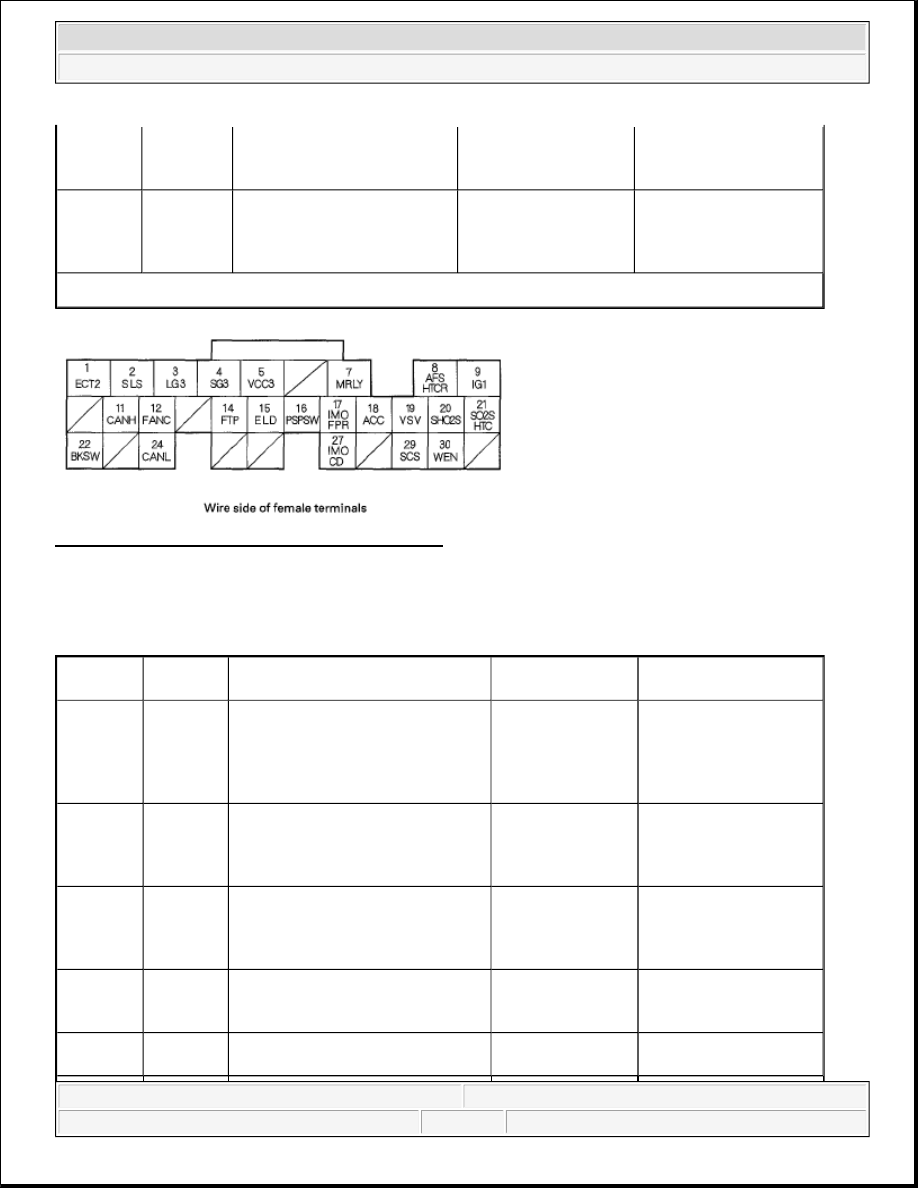Honda Element. Manual - part 534

Fig. 27: Identifying ECM/PCM Connector E (31P)
Courtesy of AMERICAN HONDA MOTOR CO., INC.
ECM/PCM CONNECTOR E REFERENCE
18
RED
ACC (A/C CLUTCH
RELAY)
Drives A/C clutch relay
about 0 V
With compressor OFF:
battery voltage
19
LT
GRN/RED
VSV (EVAPORATIVE
EMISSION (EVAP)
CANISTER VENT SHUT
VALVE)
Drives EVAP canister
vent shut valve
With ignition switch ON
(II): battery voltage
(1)
A/T
NOTE:
Standard battery voltage is about 12 V.
Terminal
number
Wire
color
Terminal name
Description
Signal
20
WHT/RED
SHO2S (SECONDARY HEATED
OXYGEN SENSOR
(SECONDARY HO2S), SENSOR
2)
Detects secondary
HO2S (sensor 2)
signal
With throttle fully closed
at idle and fully warmed
up engine: above 0.6 V
With throttle quickly
closed: below 0.4 V
21
GRN/RED
SO2SHTC (SECONDARY
HEATED OXYGEN SENSOR
(SECONDARY HO2S) HEATER
CONTROL)
Drives secondary
HO2S heater
With ignition switch ON
(II): battery voltage With
fully warmed up engine
running: duty controlled
22
WHT/BLK
BKSW (BRAKE PEDAL
POSITION SWITCH)
Detects brake pedal
position switch
signal
With brake pedal
released: about 0 V With
brake pedal pressed:
battery voltage
24
RED
CANL (CAN COMMUNICATION
SIGNAL LOW)
Sends
communication
signal
With ignition switch ON
(II): pulses
27
WHT
IMOCD (IMMOBILIZER CODE)
Detects
immobilizer signal
2007 Honda Element EX
2007-2008 ENGINE PERFORMANCE Fuel and Emissions Systems - Element